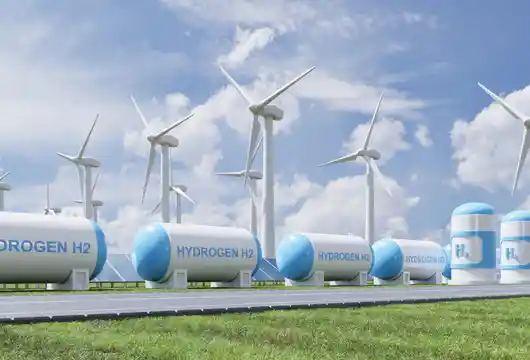President Biden made a significant move to Decarbonize U.S. economy
By allocating $7 billion in federal grants across 16 states to develop seven regional hydrogen hubs. This initiative aims to foster clean manufacturing, create blue-collar jobs, and accelerate the production of “clean hydrogen” while enhancing the infrastructure required for its distribution to industrial users. This announcement holds particular significance as it aligns with Biden’s goal to mitigate the impact of climate change and transition to more sustainable energy sources.
The seven proposed hydrogen hubs involve many prominent companies, including Exxon Mobil and Amazon, span 16 states from Pennsylvania to California. These hubs will not only support clean hydrogen production but also facilitate the necessary infrastructure to supply industries like steelmaking and cement production.
President Biden, while making the announcement, emphasized the historical significance of this advanced manufacturing investment, with a total investment reaching $50 billion combined with contributions from private companies. It’s worth noting that this initiative represents one of the most significant investments in clean manufacturing in U.S. history.
Hydrogen is produced by electrolyzing water and can be considered “clean” or low-emission if generated using renewable energy, nuclear energy, or natural gas with carbon capture technology. Biden’s administration has set ambitious targets to increase clean hydrogen output to 10 million metric tons by 2030 and a staggering 50 million by 2050, a fivefold increase from the current levels. Pure hydrogen is an ideal option to reduce emissions from industries typically challenging to decarbonize, such as steel and cement production.
Challenges in the Clean Hydrogen Industry
Despite the immense potential and government support, the clean hydrogen industry faces challenges. Industry representatives have expressed concerns about the rapid development of hydrogen projects, citing factors like high-interest rates, inflation, and uncertainty around permitting and access to additional federal subsidies. This highlights the need for a stable economic environment to support these ambitious initiatives.
The selection of these hydrogen hubs initiates a complex and lengthy process encompassing various phases, from design and development to permitting, financing, and construction. There are no guarantees that all selected projects will successfully navigate this path to receive funding. This journey underscores the importance of careful planning, collaboration, and perseverance.
The Regional Impact
The selected hydrogen hubs are strategically distributed across different regions, including the Middle Atlantic, Appalachian, Midwest, Minnesota, Plains states, the Gulf Coast, Pacific Northwest, and California. Texas and California stand out with the two most significant projects, each receiving $1.2 billion. Texas, known for its oil industry, is home to the HyVelocity hub, led by major industry players like Exxon, Chevron, and Amazon as one of its expected end users. Meanwhile, California, a leader in green energy, presents its hub with a substantial focus on sustainability.
U.S. hydrogen industry players eagerly await guidance from the Treasury Department on accessing additional subsidies created by last year’s Inflation Reduction Act. These rules are expected to be released by the end of the year. The outcome of this guidance will significantly impact the financing prospects for new clean hydrogen projects.
Environmentalists call for stringent guidelines to ensure that tax credits, worth up to $100 billion, are allocated only to hydrogen producers using new clean electricity sources. This would ensure that hydrogen is genuinely “clean” and not simply labeled as such. On the other hand, industry groups argue that these regulations could deter investment.
Most of the selected hydrogen hubs involve using natural gas for hydrogen production. However, these facilities must incorporate carbon capture technology to qualify as clean hydrogen producers. It’s important to note that carbon capture technology is yet to be widely adopted at scale.
President Biden’s announced $7 billion in federal grants for developing hydrogen hubs underscores the U.S. government’s commitment to clean energy and emission reduction. While significant challenges exist in achieving these goals, these investments signal a major step toward a more sustainable and environmentally friendly future.
CLICK HERE for more inspiring climate news

